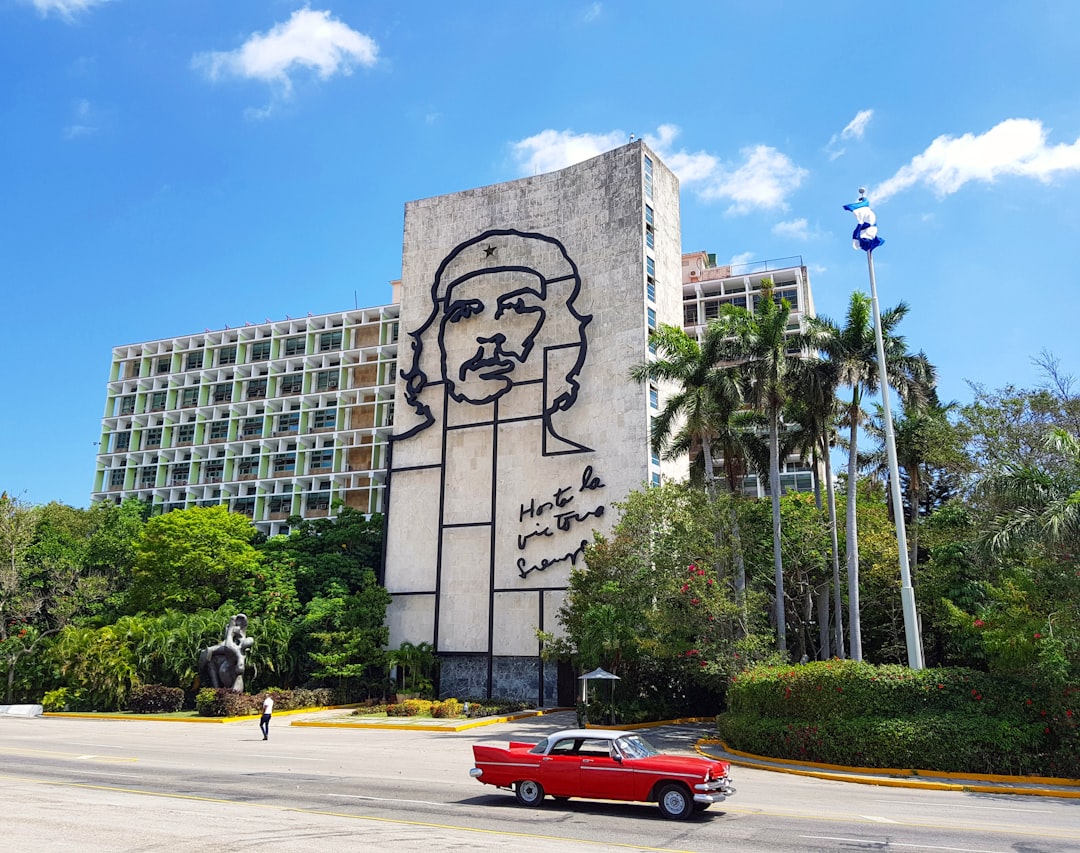The Joint Chiefs of Staff, a body of senior uniformed leaders in the United States Armed Forces, plays a pivotal role in shaping national defense policy and military strategy. Their case, particularly in relation to U.S.-Cuba relations, has garnered significant attention in recent years. As geopolitical tensions fluctuate, the Joint Chiefs are tasked with assessing threats, evaluating military readiness, and advising civilian leadership on the best course of action.
This article delves into the complexities surrounding the Joint Chiefs’ case, exploring historical contexts, threat assessments, military capabilities, and the broader implications for U.S. foreign policy. The evolving dynamics of U.S.-Cuba relations present a unique challenge for the Joint Chiefs.
With a history marked by conflict, diplomacy, and fluctuating policies, the relationship between these two nations has implications that extend beyond mere bilateral interactions. The Joint Chiefs must navigate this intricate landscape while considering national security interests, military preparedness, and potential alliances. As they assess the situation, their recommendations will significantly influence U.S.
strategy in the region and beyond.
The historical context of U.S.-Cuba relations is characterized by a series of pivotal events that have shaped the current landscape. The Cuban Revolution in 1959 marked a significant turning point, as Fidel Castro’s rise to power led to the establishment of a communist regime just 90 miles from the U.S. mainland. This development alarmed American policymakers and set the stage for decades of tension, including the infamous Bay of Pigs invasion in 1961 and the Cuban Missile Crisis in 1962. These events underscored the strategic importance of Cuba in U.S. foreign policy and highlighted the potential for conflict. Over the years, U.S. policy toward Cuba has oscillated between isolation and engagement. The imposition of economic sanctions and travel restrictions aimed to undermine the Castro regime while supporting dissident movements within Cuba. However, there have also been attempts at rapprochement, notably during the Obama administration when diplomatic relations were restored in 2015. This historical backdrop is essential for understanding the current challenges faced by the Joint Chiefs as they assess military readiness and national security concerns related to Cuba.
Key Takeaways
- The Joint Chiefs’ Case presents a comprehensive analysis of the national security concerns and potential risks associated with U.S.-Cuba relations.
- The historical context of U.S.-Cuba relations highlights the complex and often contentious nature of the two countries’ interactions over the years.
- The threat assessment emphasizes the importance of military capability and preparedness in addressing national security concerns related to Cuba.
- Potential allies and international support are crucial factors in shaping the diplomatic and negotiation efforts in dealing with Cuba.
- Public opinion and domestic support play a significant role in determining the success of any diplomatic efforts and contingency planning related to U.S.-Cuba relations.
Threat Assessment and National Security Concerns
In evaluating threats related to Cuba, the Joint Chiefs must consider a range of factors that could impact U.S. national security. While Cuba may not pose an immediate military threat comparable to other global adversaries, its strategic location and alliances with countries like Russia and China raise concerns about regional stability.
The potential for Cuba to serve as a base for hostile activities or as a conduit for intelligence gathering cannot be overlooked. The Joint Chiefs are tasked with analyzing these risks and determining appropriate responses to safeguard U.S. interests.
Moreover, the rise of cyber warfare and asymmetric threats adds another layer of complexity to the threat assessment process. The Joint Chiefs must consider how Cuba’s capabilities in these areas could impact U.S. infrastructure and security.
As technology continues to evolve, so too do the methods employed by adversaries. The Joint Chiefs’ ability to accurately assess these threats is crucial for formulating effective military strategies and ensuring that U.S. forces are prepared for any eventuality.
Military Capability and Preparedness

The military capability and preparedness of U.S. forces in relation to Cuba are critical components of the Joint Chiefs’ case. The United States maintains a robust military presence in the region, with bases strategically positioned to respond to potential threats from various adversaries, including Cuba.
The Joint Chiefs must evaluate whether current military assets are sufficient to address any emerging challenges posed by Cuba or its allies. In addition to assessing conventional military capabilities, the Joint Chiefs must also consider unconventional warfare tactics that could be employed by adversaries. This includes evaluating counterinsurgency strategies and special operations forces’ readiness to respond to potential crises in Cuba or surrounding areas.
The ability to adapt to changing circumstances is vital for maintaining a credible deterrent posture while ensuring that U.S. forces are prepared for a range of scenarios.
Potential Allies and International Support
| Country | Level of Support | Notes |
|---|---|---|
| United States | Strong | Historical alliance and shared interests |
| United Kingdom | Moderate | Supportive but cautious approach |
| France | Strong | Active support in international forums |
| Germany | Moderate | Trade and economic cooperation |
In navigating the complexities of U.S.
The Joint Chiefs must consider how alliances with regional partners can enhance U.S. strategic positioning in Latin America and counterbalance any influence exerted by Cuba or its allies.
Countries such as Colombia, Brazil, and Mexico may serve as valuable partners in addressing shared security concerns and promoting stability in the region. Furthermore, international organizations like the Organization of American States (OAS) can provide platforms for dialogue and cooperation among member states regarding issues related to Cuba. The Joint Chiefs must assess how these relationships can be leveraged to strengthen collective security efforts while promoting democratic values and human rights in Cuba.
Building coalitions with like-minded nations can enhance U.S. influence and create a united front against any potential threats emanating from Cuba.
Economic and Political Implications
The economic and political implications of U.S.-Cuba relations are multifaceted and have far-reaching consequences for both nations. The Joint Chiefs must consider how economic sanctions impact not only Cuba’s government but also its citizens, potentially fueling discontent and instability within the country. A nuanced understanding of these dynamics is essential for formulating effective policies that balance national security interests with humanitarian considerations.
Moreover, political developments within Cuba can significantly influence U.S. strategy in the region. The Joint Chiefs must remain vigilant regarding internal dissent, leadership changes, and potential shifts toward reform or increased repression.
These factors can alter the landscape of U.S.-Cuba relations and necessitate adjustments in military readiness and diplomatic approaches.
Humanitarian Considerations

Humanitarian considerations are an integral aspect of U.S.-Cuba relations that cannot be overlooked by the Joint Chiefs. While national security concerns are paramount, it is essential to recognize the human impact of policies directed at Cuba. Economic sanctions have often resulted in hardships for ordinary Cubans, leading to calls for a more compassionate approach that prioritizes humanitarian assistance.
The Joint Chiefs must weigh these humanitarian concerns against national security imperatives when advising civilian leadership on policy decisions related to Cuba. Engaging in dialogue with humanitarian organizations and exploring avenues for assistance can help alleviate suffering while fostering goodwill among the Cuban populace. A balanced approach that considers both security and humanitarian needs may ultimately contribute to a more stable relationship between the two nations.
Diplomatic and Negotiation Efforts
Diplomatic efforts play a crucial role in shaping U.S.-Cuba relations, and the Joint Chiefs must consider how military readiness intersects with diplomatic initiatives. Engaging in dialogue with Cuban leadership can help de-escalate tensions and create opportunities for cooperation on shared challenges such as drug trafficking and regional security threats. The Joint Chiefs should advocate for a comprehensive diplomatic strategy that includes backchannel communications and multilateral negotiations involving regional partners.
By fostering an environment conducive to dialogue, the United States can work toward addressing longstanding grievances while promoting stability in the region.
Public Opinion and Domestic Support
Public opinion regarding U.S.-Cuba relations is a significant factor that influences policymaking at all levels of government. The Joint Chiefs must be attuned to shifts in public sentiment as they assess military readiness and national security concerns related to Cuba. Growing calls for engagement rather than isolation reflect changing attitudes among Americans who recognize the importance of diplomacy in addressing complex international issues.
Domestic support for various approaches toward Cuba can impact funding for military operations and influence broader foreign policy decisions. The Joint Chiefs should consider how public opinion shapes perceptions of national security threats posed by Cuba while advocating for strategies that align with both military objectives and public sentiment.
Potential Risks and Contingency Planning
In assessing potential risks associated with U.S.-Cuba relations, contingency planning becomes paramount for the Joint Chiefs. The unpredictable nature of international relations necessitates preparedness for various scenarios, including sudden political upheaval within Cuba or escalations in regional tensions involving other actors. The Joint Chiefs must develop comprehensive contingency plans that outline responses to potential crises while ensuring that U.S.
forces remain agile and ready to adapt to changing circumstances. This includes conducting regular assessments of military capabilities, refining operational strategies, and engaging in joint exercises with regional partners to enhance interoperability.
Conclusion and Recommendations
In conclusion, the complexities surrounding the Joint Chiefs’ case regarding U.S.-Cuba relations require careful consideration of historical contexts, threat assessments, military capabilities, potential allies, economic implications, humanitarian concerns, diplomatic efforts, public opinion, risks, and contingency planning. As geopolitical dynamics continue to evolve, it is imperative that the Joint Chiefs provide informed recommendations that balance national security interests with humanitarian considerations. Moving forward, fostering dialogue with Cuban leadership while maintaining a credible military presence will be essential for promoting stability in the region.
Engaging with international partners can enhance collective security efforts while addressing shared challenges effectively. Ultimately, a comprehensive approach that integrates military readiness with diplomatic initiatives will contribute to a more stable relationship between the United States and Cuba while safeguarding national interests.
In exploring the historical context of the Joint Chiefs’ desire to invade Cuba, it’s essential to consider the broader geopolitical tensions of the era. The article “Why the Joint Chiefs wanted to invade Cuba” delves into the strategic calculations and military considerations that fueled this aggressive stance during the Cold War. For a deeper understanding of the period’s complex dynamics, you might find it insightful to read a related article on the same website. You can access more intriguing historical insights by visiting this page. This resource provides a broader perspective on the events and decisions that shaped this critical moment in history.
FAQs
What were the reasons behind the Joint Chiefs wanting to invade Cuba?
The Joint Chiefs wanted to invade Cuba due to their concerns about the spread of communism in the Western Hemisphere, particularly after the Cuban Revolution and the establishment of a communist government under Fidel Castro.
What role did the Cuban Missile Crisis play in the Joint Chiefs’ desire to invade Cuba?
The Cuban Missile Crisis heightened the Joint Chiefs’ concerns about the threat posed by Cuba, as it revealed the presence of Soviet nuclear missiles in Cuba, which could potentially be used against the United States.
Did the Joint Chiefs’ plan to invade Cuba come to fruition?
No, the plan to invade Cuba was ultimately not carried out. President John F. Kennedy opted for a naval blockade of Cuba instead, which led to the resolution of the Cuban Missile Crisis through diplomatic means.
What impact did the Joint Chiefs’ desire to invade Cuba have on US foreign policy?
The Joint Chiefs’ desire to invade Cuba highlighted the intense Cold War tensions and the US government’s determination to prevent the spread of communism in the Western Hemisphere. It also underscored the complexities and risks involved in managing international crises during the Cold War era.
